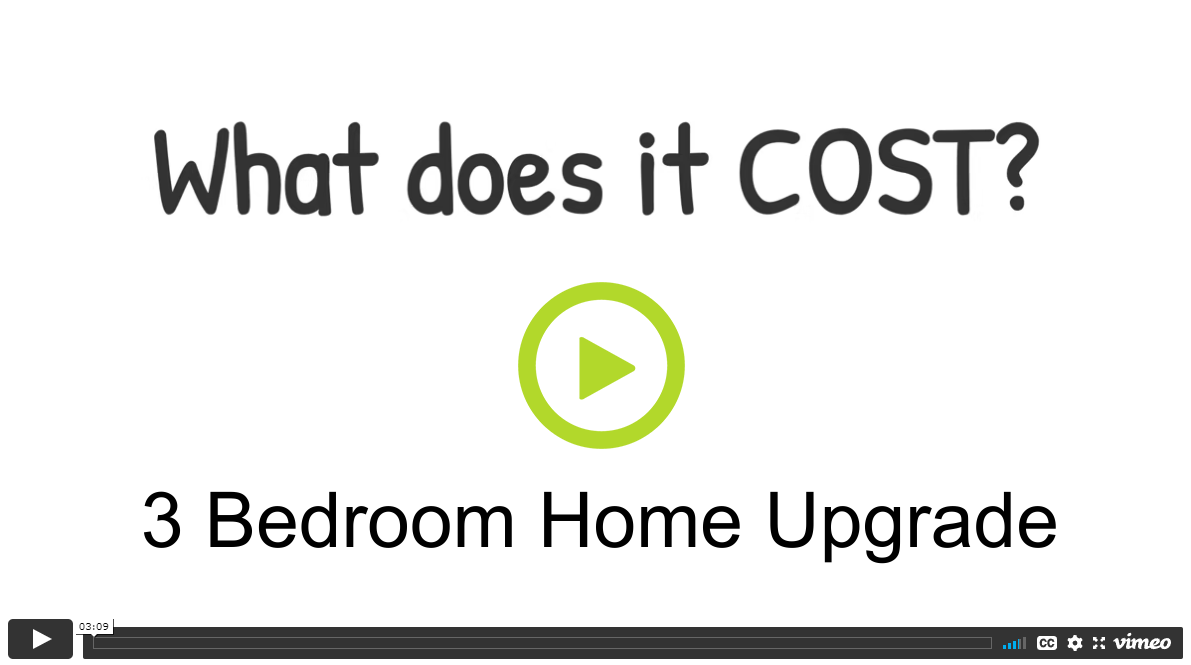What does it cost to upgrade a home to smart?
This article is for upgrading a home that is already built or undergoing renovation. If you are building a new home – Click here
“Upgrading your home to ‘Smart’ in Dubai is easy, but it can also be confusing and frustrating. This is a major purchase and there are a LOT of choices for both companies and products.”
When you’re choosing the system for your smart home upgrade for either retrofit or during a renovation, it’s all about budget, preference, and not investing in something that is going to make you hate interacting with your home.
You are going to be living with this technology for many years and you will be interacting with it many times a day. If you are unhappy with your investment, you are going to be reminded of it every time you turn on a light. I guess what I am trying to say is: Choosing a smart home system for your home is worthy of some serious consideration and research.
In this article, we are going compare the two main categories of products that you are going to see in the market, and try and help you make a better, more informed decision, save you from headaches, and maybe even save you some money.
The important distinction here is that we will only cover systems that can be easily retrofitted into your home without cutting into walls and ceilings, rewiring, or making a mess.
DIY (Do it Yourself) Products
DIY products are ‘typically’ low-cost and can be found on Amazon or even at your local electronics store. They’re not really designed for a large concrete villa as we have here in Dubai, but they can work well for smaller apartments or single rooms.
These products ARE designed to be easily installed by the purchaser without any technical knowledge. But let’s face it, this is Dubai and you can pay someone a small fee, and they will do a decent job of installation.
DIY products like these often rely on ‘cloud services’ to process the commands (Turning things on and off). You need to know that some of these products can be a little slow when it comes to controls as data has to travel across the internet to a computer in another country and back in for this to happen. If you want to know more about this – click here and read our article on Cloud-Based Systems.
One of the challenges with DIY-grade products is that due to the fact that they all use their own cloud, they also have their own dedicated app. So, what you end up with is an app for curtains, an app for lights, and an app for thermostats.
And then there is technical support. With many of these products, you are kind of on your own. That’s why it’s called DIY. You are either relying on emails from the manufacturer or searching online forums and getting help from other users.
However, there is also a grey area between pro-grade and DIY and we call it “Professionally installed DIY products”. These are companies that take a DIY-grade product, add bundle it with professional design and installation services. A good installer will be able to unify all your controls into one single app and can also provide technical support after installation. These solutions ARE usually cheaper than those we consider FULL professional grade, but it is a good option if you can find a good reputable company to work with that is using a high-quality product.
This is not necessarily bad, as long as you understand what you are getting, and the limitations their products have. Ask if the system used the cloud and what happens if your internet is down, weigh those risks with the costs, and make your decision.
Professional Grade
Now let’s dig into ‘Professional Grade’, it does cost more, these systems are designed and installed by people who ‘hopefully’ have years of experience and usually live with and use the technology in their own homes and understand the difference between enhancing your life and adding technology for the sake of technology.
Pro-Grade components are also usually of higher quality, and if it’s a reputable company, will offer direct technical support.
The biggest difference between DIY and Pro-grade (other than cost) is the overall user experience, this is because your consultant/installer is going to be able to give you a more personalized experience without you needing to do the research yourself.
A professional installer will design a system with you and your lifestyle as the center, it’s personalized to you.
Things like, how the wall switches match your interior design, how simple or advanced you want the system to be, and compatibility with products you may want to add in the future, are all taken into account.
And at this level, you should not be relying on a cloud-based system. The “brain”, sometimes called the “hub” for your system is INSIDE your home, you own it, forever, no internet connection is required, which means you get fast control with no lag, and your privacy/security is always protected.
On a features level, professional-grade products are more usually advanced than DIY and can be customized to your exact needs. They are designed to work seamlessly, together in one unified app, and can even interact with each other.
And If you do have a problem, a good smart home contractor is going to provide you with fast technical support that can either remotely solve your problem or send a technician to help.
